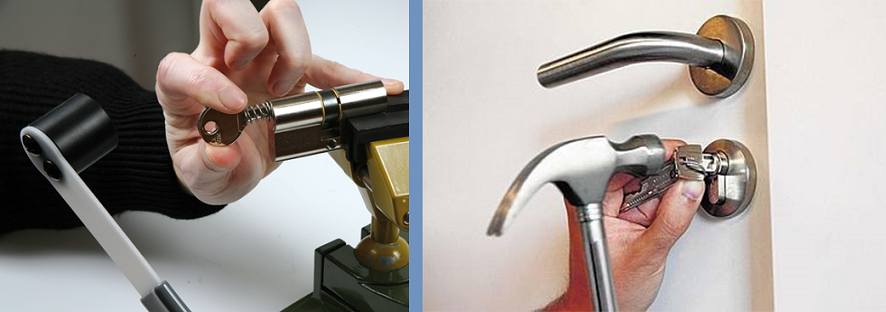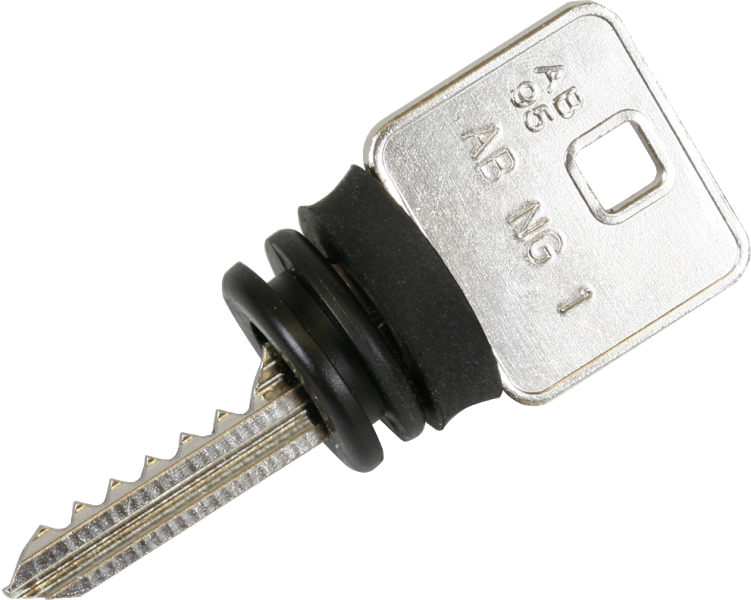How is a bump key used, how does it work, is it new, and what are its limitations?
A bump key is a specially designed key that is used with a hammer or other item that applies blunt force to open a lock. These keys are usually used on a standard pin tumbler lock. While this sounds alarming as if it makes locks useless in protecting your property and keeping your family safe, there are limitations in what locks a bump key can open.
How a standard pin tumbler works
The basic parts of the lock include a key pin, a driver pin, a shear line, a cylinder, the plug, and the bible. The bible houses the plug, cylinder. The key is inserted into the cylinder. For a lock to open, it requires the use of the correct key. When a key is cut to fit a specific lock, the grooves are what allow the pins to line up properly with the shear line in order to turn the key and unlock the lock by turning the tumbler. The basic pin tumbler lock uses several stacks of pins. Each stack contains a bottom pin which is the key pin, a top pin which is the driver pin, and a spring that is located above the top pin. The key pins are of varying lengths, while the driver pins are usually a standard length.
Using a bump key requires both skill and a bit of chance. A bump key is cut using the same brand of the key as the lock. The grooves on the key are carefully filed down. The trick behind a bump key is that it moves the pins to either side of the shear line for just a quick amount of time that allows a blunt force, bump, to line up the driver pins above the shear line with the key pins below and allow the tumbler to turn.
Are Bump Keys New Technology?
Bump keys, or methods of picking a lock, have been around since the invention of the key and lock hundreds of years ago. The easiest keys to turn into a bump key are those that have a bow, the head of the key, a tip, the part that is inserted into the lock, cuts or grooves, and a shoulder, the part that rests against the edge of the outside of the lock to stop the key from going further into the keyhole when inserted. Years ago, locksmiths introduced a technique that was used to correct a cylinder that had been assembled improperly in their workshops and not as a way to break into a home. This technique involved tapping on a lock cylinder while applying pressure to make the pins jump inside the cylinder making the plug slide out freely.
Bump Key Limitations
Because almost all residential doors in the United States use cylinder locks that are so vulnerable to bumping that a child could do it, they are an easy target for criminals. However, there are some limitations and show visible signs of forced entry when the lock is examined. A bump key will not work on high-security locking systems or on automobiles because vehicles do not use a pin tumbler style of the lock but rather usually use sliders or wafer locks. However, there is a jiggle key that is somewhat similar to bumping.

How Do I Bump Proof My Locks?
First, take steps to secure your property by taking part in neighborhood watch programs, keeping landscaping trimmed so criminals may not hide as they try to gain access, and using security cameras and alarm systems. If your locks are more than five years old and have not been re-keyed, or if you have lost your keys or are not sure of who all has a copy of your keys, it is time to reevaluate your locks to make them bump proof. A deadbolt is the fastest, easiest, and most cost-effective way to get a bump-proof lock. You could also install an anti-lock bumping device that prevents the turn knob that locks and unlocks the lock from turning, installs security pins or high-security locks, or a keyless entry system.
Ensure Your Locks and Keys are Safe and Secure
Making sure your locks are secure and safe from bumping attempts first requires knowledge of understanding how your locks and keys work followed by making the best decision for which locks you choose for your home or office. Learn how to properly protect your locks from bump key attempts of break-ins by contacting a knowledgeable and local locksmith who will be able to recommend steps to take or locking systems to install that are bump proof.

